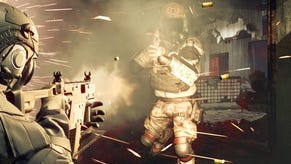Face-Off: Umbrella Corps
PC takes point over a compromised PS4 release.
Developed by Capcom Osaka, Umbrella Corps takes elements from the Resident Evil series and places them into an online multiplayer shooter with first and third-person perspectives. Available on PS4 and PC, and built using the Unity engine, it's not exactly a game fans were crying out for - and it's also one where jarring performance issues on console can significantly impact upon the experience. Unity has a troubled past with performance on console and it's a little frustrating to see the issue still in effect on later titles.
While Umbrella Corps doesn't come anywhere near to matching the visual quality of today's major first-person shooters, it's a cut above many other Unity engine titles: there is some nice ambient lighting on show, shadow quality isn't bad, while alpha effects and particles spruce up heated shootouts in familiar environments taken from past Resident Evil games. It's far from a graphical powerhouse though, which should make hitting 60fps an achievable task for extended periods of play. However, that's not the case on PlayStation 4, and regardless of whether you're playing in single or multiplayer, Umbrella Corps is predominantly a 30-40fps game.
Umbrella Corps has two very different performance profiles. V-sync enabled is on the single-player component and disabled on the training and main multiplayer modes. Regardless, neither manages to get close to consistently running at 60fps. In multiplayer, there's constant tearing and variable frame-rates between 25fps up to around 45fps in less demanding areas. There's invariable stutter, and jarring hitches that are distracting. It sounds bad, and to be frank, it looks bad. However, the lack of v-sync does help to even out controller response despite such varied levels of performance.
While not entirely consistent, large frame-time spikes are mostly kept in check, and as a result gameplay actually feels sharper and more responsive compared to the unstable 30fps v-sync experience we'd get otherwise. It's not an ideal situation, and we're really not keen on all the tearing, but with performance falling way short of 60fps it looks like the right call was made in order to preserved playability online.
Unfortunately, the single-player portion of the game doesn't fare quite as well, and the game is much less enjoyable to play in this mode, due in part to its firm lock on v-sync. Initially, we're greeted with a pleasing lack of tearing met with a 30fps update. The controls don't feel as crisp, but they are consistent and this helps to create a more stable gameplay experience. This doesn't last long though, as it soon becomes clear that frame-rates aren't limited to 30fps. In fact, we're looking at an uncapped frame-rate combined with double-buffered v-sync here, leading to jarring variances in both fluidity and controller response. When the engine can't hit 60fps, frame-rates either fall to 30fps - or fluctuate between 30/60fps for sustained periods. The end result is that motion is spoiled by obtrusive judder and controls feel erratic.
Given the choice, we'd opt for the uncapped, no v-sync approach used in multiplayer across the entire game, but there is no option to do this. Right now, the only way to obtain a stable experience is with the PC version, where it's possible to run the game at a solid 60fps, bypassing the performance issues on PS4. And with a consistent frame-rate in place, the gameplay becomes much more enjoyable - aiming and moving feels fluid and responsive, while smooth motion allows for clear tracking of targets in more fast-paced shootouts.
The boost to performance is clearly the biggest upgrade when moving to PC, but elsewhere there is little to distinguish between both versions. A native 1080p framebuffer is present on PS4, with post-process anti-aliasing used to tacked jaggies. Image quality appears pretty smooth on near field scenery, though this does come at the expense of some softness across the entire scene, and shimmering is still visible across distant objects and finer details. Bar slightly less aliasing in some scenes, image quality is much the same on PC too, and there are only limited options in improving this aspect of the game.
There is no anti-aliasing option in the display settings menu though, with Capcom's post-process solution permanently enabled. However, it is possible to use supersampling (via DSR or VSR) via Nvidia or AMD's control panels, which produces a more refined presentation - assuming you have the GPU power available. And of course, you can always run at resolutions beyond 1080p in order to increase sharpness.
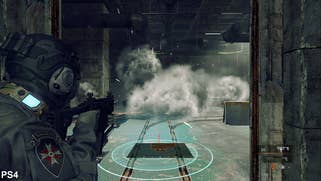
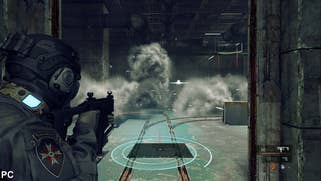
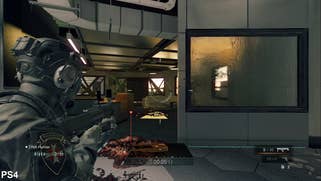
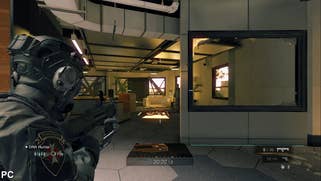

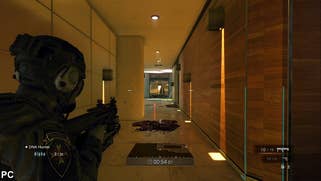
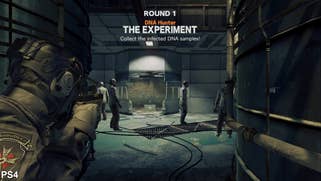
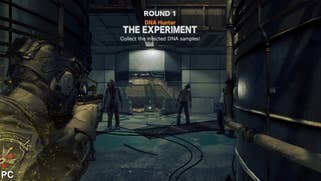


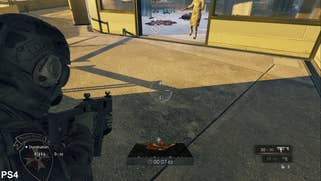
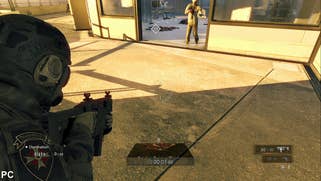
In other areas most of the core visual features are identical across PS4 and PC, with matching texture work, filtering, shadows, and alpha effects. However, ambient occlusion is missing from the PS4 version, which leads to brighter locations lacking the same level of depth displayed on PC. By comparison, the PC version feature low, medium and high ambient occlusion settings, with the lowest still adding extra depth to environments over PS4. The effect can be demanding, so using a lower quality implementation wouldn't be surprising, but removing it entirely is somewhat odd, considering that shadow quality usually has far more of an impact on performance.
There are also noticeable variances in lighting across both platforms, with some scenes showing additional light sources on one platform and not the other, and vice-versa. In a few areas, lights also cast specular highlights across metal work on PC, but not always on PS4, while indirect lighting is sometimes dialed back on console. The randomness of these inconsistencies is curious and may indicate a bug that can be fixed as opposed to a conscious downgrade.
Umbrella Corps: the Digital Foundry verdict
Overall, Umbrella Corps straddles the line between last and current-gen standards in graphical quality, and isn't a terribly impressive game on either platform. It's fun though, but clearly the PS4 version has issues - whether it's down to lurching single-player frame-rates or obtrusive tearing in multiplayer. In terms of overall polish, the console version of this title just isn't a great place at the moment and needs a concerted optimisation effort.
The PC version is a pretty solid release by comparison, with stable frame-rates giving the game a more polished feel. If you like the idea of a Call of Duty-inspired experience with elements from the Resident Evil games included, playing on PC is by far the best way to enjoy the experience right now. But the cost comes in terms of the required hardware - to max-out what is a hardly a state-of-the-art game requires some meaty GPU hardware. A Core i3 processor seemed sufficient in terms of the CPU requirement, but only a GTX 970 or better could give us a 60fps lock at 1080p. And what's even more surprising here is that GPU utilisation looks very low. We swapped in GTX 950 and GTX 960 and saw similar under-utilisation, but crucially, we lost that all important 60fps.
Hopefully, we'll see a patch deployed on PS4 to help improve performance and deliver an experience that is more consistent, or at the very least, client-side controls for enabling or disabling v-sync. But for now, Umbrella Corps is best enjoyed on PC, as long as you have .




